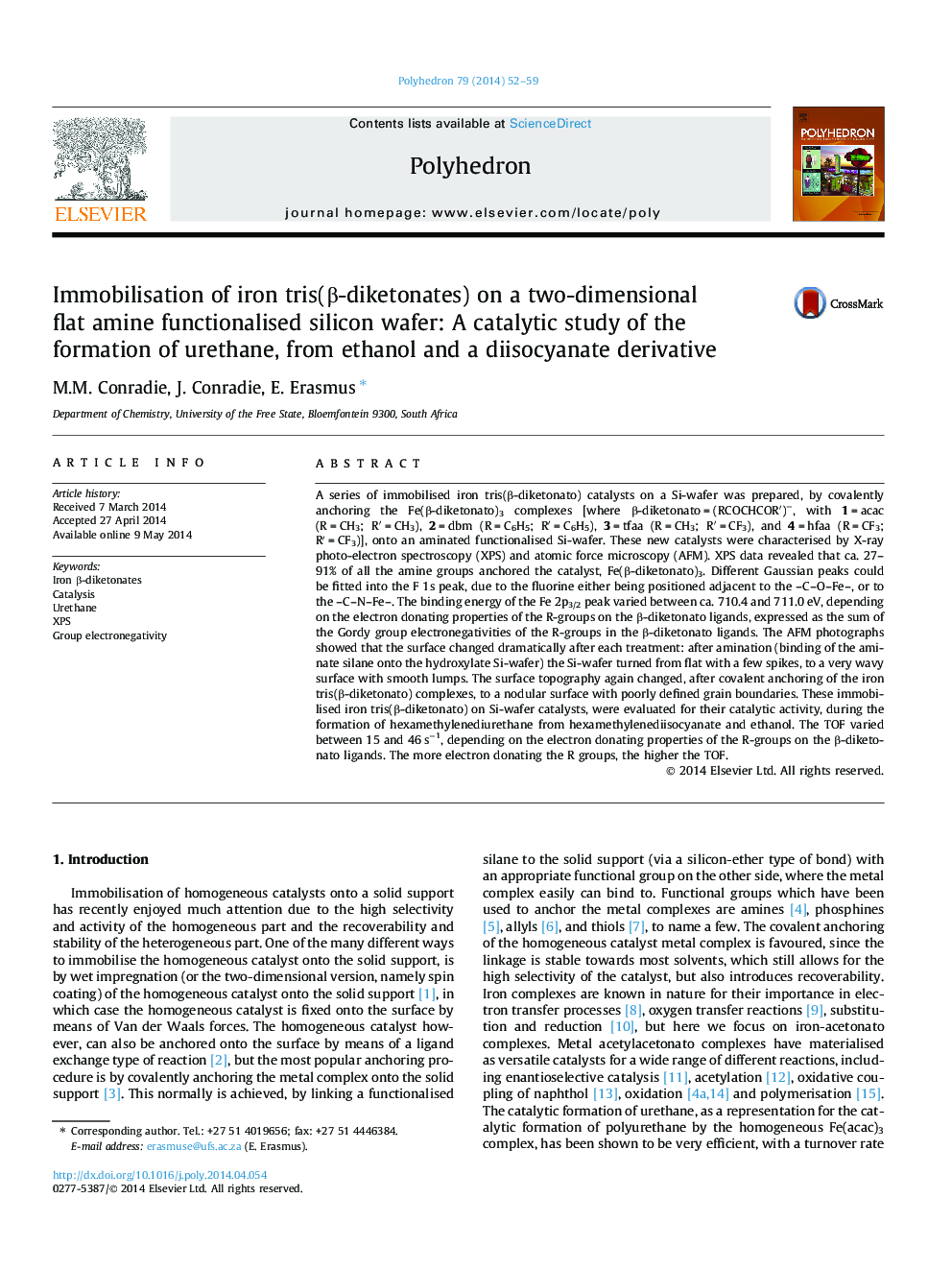| کد مقاله | کد نشریه | سال انتشار | مقاله انگلیسی | نسخه تمام متن |
|---|---|---|---|---|
| 1337699 | 1500260 | 2014 | 8 صفحه PDF | دانلود رایگان |

A series of immobilised iron tris(β-diketonato) catalysts on a Si-wafer was prepared, by covalently anchoring the Fe(β-diketonato)3 complexes [where β-diketonato = (RCOCHCOR′)−, with 1 = acac (R = CH3; R′ = CH3), 2 = dbm (R = C6H5; R′ = C6H5), 3 = tfaa (R = CH3; R′ = CF3), and 4 = hfaa (R = CF3; R′ = CF3)], onto an aminated functionalised Si-wafer. These new catalysts were characterised by X-ray photo-electron spectroscopy (XPS) and atomic force microscopy (AFM). XPS data revealed that ca. 27–91% of all the amine groups anchored the catalyst, Fe(β-diketonato)3. Different Gaussian peaks could be fitted into the F 1s peak, due to the fluorine either being positioned adjacent to the –C–O–Fe–, or to the –C–N–Fe–. The binding energy of the Fe 2p3/2 peak varied between ca. 710.4 and 711.0 eV, depending on the electron donating properties of the R-groups on the β-diketonato ligands, expressed as the sum of the Gordy group electronegativities of the R-groups in the β-diketonato ligands. The AFM photographs showed that the surface changed dramatically after each treatment: after amination (binding of the aminate silane onto the hydroxylate Si-wafer) the Si-wafer turned from flat with a few spikes, to a very wavy surface with smooth lumps. The surface topography again changed, after covalent anchoring of the iron tris(β-diketonato) complexes, to a nodular surface with poorly defined grain boundaries. These immobilised iron tris(β-diketonato) on Si-wafer catalysts, were evaluated for their catalytic activity, during the formation of hexamethylenediurethane from hexamethylenediisocyanate and ethanol. The TOF varied between 15 and 46 s−1, depending on the electron donating properties of the R-groups on the β-diketonato ligands. The more electron donating the R groups, the higher the TOF.
A series of immobilised Fe(β-diketonato)3 on Si-wafers were prepared, and tested for their catalytic activity in the heterogeneous phase for the formation of diurethane. It was found that more electron donating R-groups on the β-diketonato ligand (RCOCHCOR′)− increases the catalytic activity.Figure optionsDownload as PowerPoint slide
Journal: Polyhedron - Volume 79, 5 September 2014, Pages 52–59